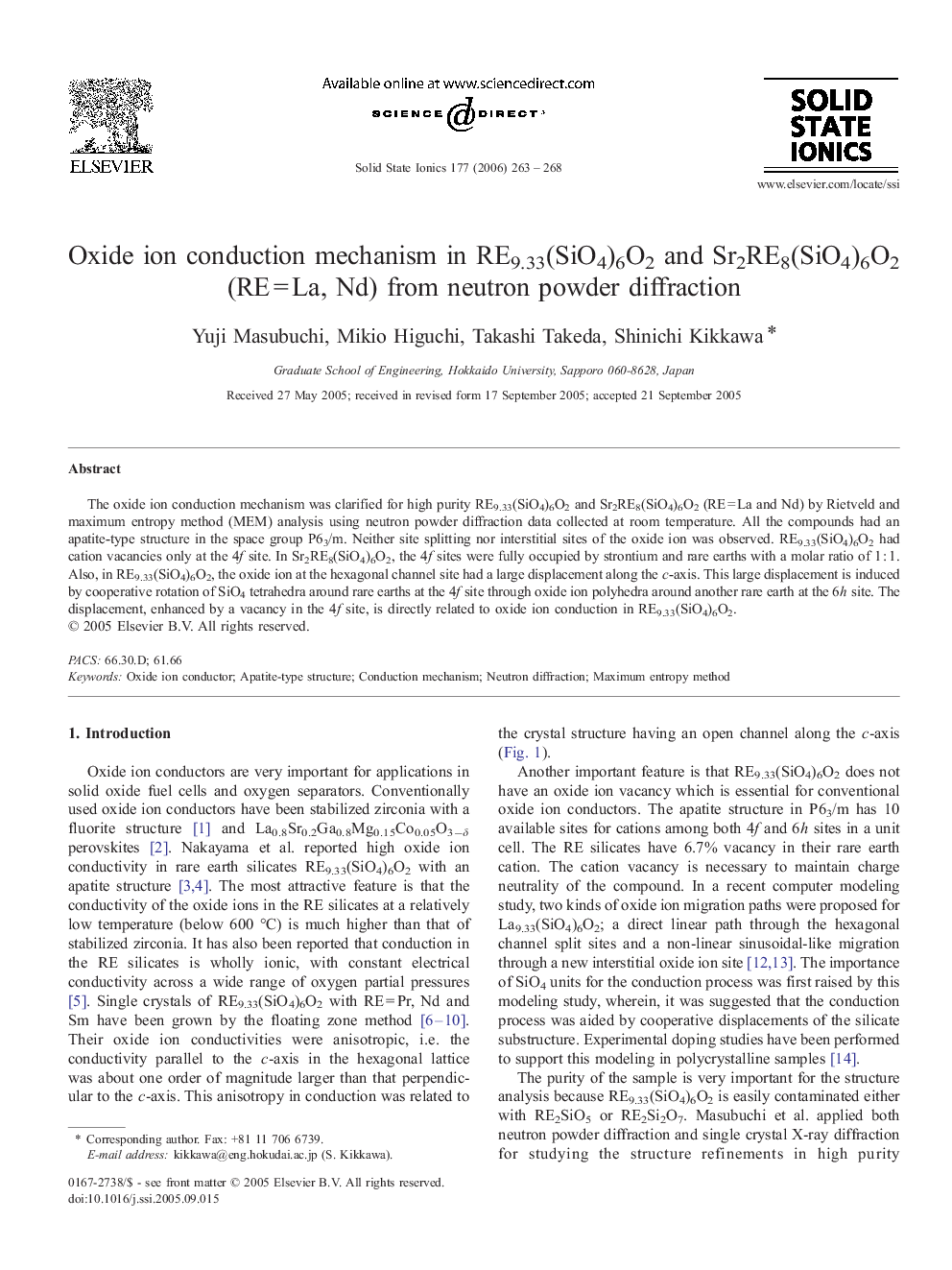| Article ID | Journal | Published Year | Pages | File Type |
|---|---|---|---|---|
| 1295660 | Solid State Ionics | 2006 | 6 Pages |
The oxide ion conduction mechanism was clarified for high purity RE9.33(SiO4)6O2 and Sr2RE8(SiO4)6O2 (RE = La and Nd) by Rietveld and maximum entropy method (MEM) analysis using neutron powder diffraction data collected at room temperature. All the compounds had an apatite-type structure in the space group P63/m. Neither site splitting nor interstitial sites of the oxide ion was observed. RE9.33(SiO4)6O2 had cation vacancies only at the 4f site. In Sr2RE8(SiO4)6O2, the 4f sites were fully occupied by strontium and rare earths with a molar ratio of 1 : 1. Also, in RE9.33(SiO4)6O2, the oxide ion at the hexagonal channel site had a large displacement along the c-axis. This large displacement is induced by cooperative rotation of SiO4 tetrahedra around rare earths at the 4f site through oxide ion polyhedra around another rare earth at the 6h site. The displacement, enhanced by a vacancy in the 4f site, is directly related to oxide ion conduction in RE9.33(SiO4)6O2.
